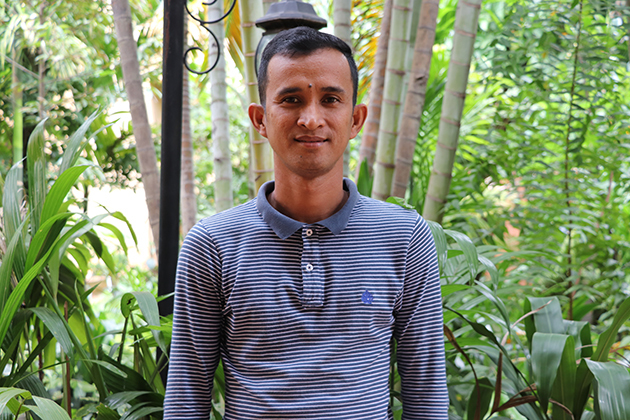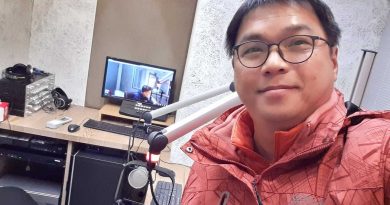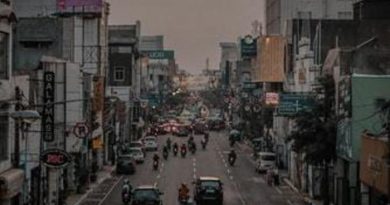Interview with Mr. MAN Sokkoeun, Executive Director of Youth for Peace-Cambodia
1. What are the key social issues in Cambodia with regard to democracy and human rights?
After ending civil war 1998, many social issues happened and affected Cambodia society. In last five years, I would raise some key social issues that impact to democracy and human right of Cambodia as, 1) create law to accuse opposite leader then eliminate this party, mainly, attacks on political opposition, 2) attacks on human rights defenders/peace activists, 3) freedom of media (low of freedom of expression), 4) corruption, 5) land concession and 6) establishing NGOs law.
NGO law was established to monitor NGOs works, currently some NGOs are accused to be part of opposite party groups.
2. You have been working with the genocide issue for more than 10 years, what are the most difficult critical challenges you face? Please tell us about the truth-finding, reconciliation, forgiveness and reparation for the victims with regard to the KR genocide. Will the Korean experiences (such as Jeju and Kwangju) be helpful to you in your reconciliation and memory works?
The most difficult critical challenges I face are working with the former Khmer Rouge or perpetrator. As you know, genocide of Cambodia finished about 40 years. Justice, reconciliation and memorialization approaches were established. Those mechanisms could work smoothly with victim-survivors. It means that victim-survivors have more chances to participate in finding truth, reconciliation and justice. Whereas, the former Khmer Rouge or perpetrators seemed to be isolated. They are fearful with their security when they share their true stories.
In the process of transitional justice, many mechanisms are set up to engage both victim-survivors and perpetrators who participate in healing, truth-seeking, memory building and reconciliation.
Healing: Through ceremonies and memorials, it is more conducive to healing when they have focused on sharing communal suffering and honoring loved ones rather than focusing enmity on perpetrators and their kin. Local community and religious organizations played an essential role in this process since they have tapped into local cultural and religious norms associated with healing. Programs like art workshops and inter-generational dialogues are very important.
Memory building: The community memorials remind current and future generations of the crimes committed during the Khmer Rouge regime. During the religious ceremonies or day of remembrance, the community memorials bring communities together as one in remembering shared trauma and loss. This generates forgiveness and forgetting. Memorialization can contribute to reconciliation by marking, acknowledging, and honoring the victims’ suffering.
Truth-seeking: Truth seeking is a device for empowerment and opportunity to have one’s voice heard after more than thirty years of being effectively silenced. This enables people to understand why the abuses happened – to hear explanations directly from the mouths of perpetrators and to generally understand how the broader system of repression functioned. Specifically, truth-seeking through dialogues creates a safe space for victims and perpetrators to interact, and foster understanding and forgiveness. The public discussion of suffering under the Khmer Rouge brings the shared experiences of the villagers to open and begin the process of community-wide healing. The community dialogues play an important role for the survivor Khmer Rouge cadres, who continue to be haunted by the fear of revenge.
Reconciliation and relation building: Many former low-level cadres live in perpetual worry that the victims who live in their villages will engage in violent retribution against them. With the dialogues and forums, former Khmer Rouge cadres are grateful for the opportunity that the dialogues provide to foster understanding among community members an opportunity for forgiveness. These community inputs and participation are very valuable not only in ensuring the engagement of communities in a healing process but also in creating a long-lasting impact. Through the programs conducted by Youth For Peace organization, the local communities can interact with one another. There was an interaction between survivors and the former Khmer Rouge, interaction between young and old people in intergenerational dialogues and inter-religious understanding and interaction between Buddhists, Muslims, and Christians.
Reparation: The government does not have policy for individual reparation. The collective reparation approved by ECCC. There were many local and international organizations established different projects to support victim-survivors regarding reconciliation and memorialization. For Youth For Peace organization (YFP) implemented 3 projects such as Forced Transferred, Memory Sketch of Kraing Ta Chan Security Center and Community Peace Learning Center at Samrong Knong, Battambang province. These projects are funded by different international donors.
Honestly, I do not know clearly about Jeju and Kwangju so I can not reflect on it.
3. Global society is very concerned about the impunity issue in Cambodia, please tell us more about this too.
Sure, impunity is one of the big issues that Cambodia is facing. Based on the research of human rights organizations found that a major cause of the problem was a lack of political will by the government to prosecute known human rights abusers. Adding to the problem is the lack of neutrality and independence of the judicial and law enforcement systems, as well as a low level of professionalism in these bodies.
Currently, when the government leads the country alone without participating from opposite party groups, it seems to indicate power that they can decide what they want. Because of poverty, the government provides more opportunity to China investors to open businesses regarding to gambling in coastal provinces. Land of community is provided to these investors without proper reparation. It created anger between people and companies, whereas the government seemed not neutral and transparent in finding justice for victims of this conflict.




